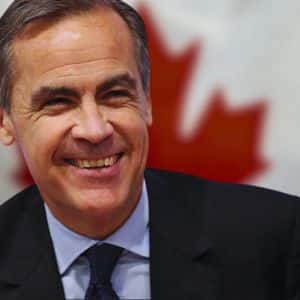BitcoinWorld Japanese Yen’s Alarming Decline: Unpacking Structural Flows Against the JPY In the dynamic world of global finance, currency movements often serve as critical barometers of economic health and investor 0 those navigating the volatile cryptocurrency markets, understanding these broader macroeconomic shifts is paramount. Recently, the Japanese Yen has been a focal point of concern, with institutions like BofA Securities highlighting persistent structural flows that continue to weigh heavily on its 1 isn’t just a fleeting market fluctuation; it’s a deep-seated challenge with profound implications for investors, businesses, and the broader global 2 the Relentless Pressure on the Japanese Yen The Japanese Yen , once considered a safe-haven currency, has experienced a significant depreciation against major global currencies, particularly the US 3 Securities’ analysis underscores that these are not merely cyclical movements but rather entrenched structural 4 exactly does this mean?
Structural flows refer to long-term, fundamental economic forces that exert sustained pressure on a currency, as opposed to short-term speculative trades or transient market 5 forces are deeply rooted in a country’s economic policies, demographic trends, and its position within the international financial 6 key factors contribute to these structural headwinds: Divergent Monetary Policy: The most prominent factor is the stark contrast in Monetary Policy between the Bank of Japan (BoJ) and other major central banks, especially the 7 8 central banks globally have aggressively hiked interest rates to combat inflation, the BoJ has maintained an ultra-loose stance, keeping its policy rate in negative territory and continuing its yield curve control (YCC) 9 Trade Deficits: Japan has traditionally run trade surpluses, but rising energy and commodity prices, coupled with a weaker yen making imports more expensive, have led to a sustained period of trade 10 outflow of currency to pay for imports naturally puts downward pressure on the 11 Challenges: Japan faces severe demographic challenges, including an aging and shrinking 12 impacts potential economic growth, productivity, and long-term fiscal sustainability, making the country less attractive for foreign direct 13 Flows (Carry Trade): The significant Interest Rate Differentials create an attractive environment for the ‘carry trade.’ Investors borrow in low-yielding currencies like the JPY and invest in higher-yielding assets elsewhere, further increasing selling pressure on the 14 Do Interest Rate Differentials Fuel JPY Weakness?
The concept of Interest Rate Differentials is central to understanding the yen’s 15 you can borrow money at virtually zero interest in Japan and invest it in 16 bonds yielding 5%. This strategy, known as the carry trade, offers a substantial profit 17 more investors engage in this, they sell JPY to buy USD (or other higher-yielding currencies), driving down the yen’s 18 wider the gap between Japanese interest rates and those in other major economies, the more attractive the carry trade becomes, creating a self-reinforcing cycle of JPY depreciation. Let’s look at a simplified comparison of policy rates: Central Bank Policy Rate (Approx.) Stance Bank of Japan (BoJ) -0.1% to 0.1% Ultra-loose, dovish 19 Reserve (Fed) 5.25% to 5.50% Restrictive, hawkish European Central Bank (ECB) 4.00% to 4.50% Restrictive, hawkish This table starkly illustrates the immense gap that incentivizes capital to flow out of Japan and into economies with higher returns, directly impacting the Forex Market dynamics for the 20 Bank of Japan’s Dilemma: Navigating a Tightrope of Monetary Policy The Bank of Japan faces an unenviable 21 a weak yen helps Japanese exporters by making their goods cheaper abroad, it also significantly increases the cost of imports, particularly energy and food, leading to domestic 22 a country that has battled deflation for decades, this new inflationary environment presents a complex 23 rates aggressively could stabilize the yen but risks stifling Japan’s fragile economic recovery and potentially destabilizing its vast government debt 24 BoJ’s primary reasons for maintaining its ultra-loose Monetary Policy include: Supporting Wage Growth: The BoJ believes sustained wage growth is crucial for achieving stable, demand-driven 25 tightening could undermine 26 Economic Stagnation: Despite some signs of improvement, Japan’s economy still faces structural 27 BoJ is wary of triggering a recession by tightening too 28 Government Debt: Japan has the highest public debt-to-GDP ratio among developed 29 interest rates would dramatically increase the cost of servicing this debt, potentially creating a fiscal 30 delicate balancing act means the BoJ is likely to remain an outlier among global central banks for the foreseeable future, perpetuating the Interest Rate Differentials that weaken the 31 on the Global Economy and Financial Markets The sustained weakness of the Japanese Yen is not just a Japanese problem; it has ripple effects across the global 32 a major trading nation and a significant player in global finance, Japan’s currency movements can influence: Global Trade Dynamics: A cheaper yen makes Japanese exports more competitive, which could impact other exporting nations.
Conversely, it makes imports into Japan more expensive, potentially altering global supply 33 Flows: The attractiveness of the JPY carry trade can influence global capital allocation, diverting funds from other emerging or developed 34 Prices: Japan is a major importer of commodities. A weaker yen means higher local currency costs for oil, gas, and metals, which can indirectly influence global demand and 35 Bank Policies: Persistent JPY weakness could force other central banks, particularly those in Asia, to consider their own currency interventions or policy adjustments to maintain 36 the Forex Market , the yen’s trajectory remains a key driver of volatility and opportunity, with traders constantly monitoring BoJ statements and economic data for any signs of a 37 and Risks for Japan’s Economy While a weak yen might benefit some large exporters, the broader challenges for Japan’s domestic economy are considerable: Imported Inflation: The most immediate and tangible impact is the surge in import costs, leading to higher prices for everyday goods, from food to 38 erodes household purchasing power and living 39 Investment Confidence: While some foreign investors might be attracted to cheap Japanese assets, the persistent currency weakness can also signal underlying economic fragility, deterring long-term foreign direct 40 of National Wealth: A weaker currency means that Japanese assets held abroad, when converted back to yen, are worth less.
Conversely, foreign assets held by Japanese investors are worth more, but the overall purchasing power of the nation’s wealth declines on the global 41 Constraints: The BoJ’s limited room for maneuver means it may struggle to respond effectively to future economic shocks without exacerbating the yen’s weakness or triggering a fiscal 42 Insights for Investors and Businesses Given the persistent structural flows against the Japanese Yen , what does this mean for those operating in or observing the financial markets? For Forex Traders: The JPY remains a prime candidate for short positions against stronger currencies, particularly those with higher interest rates.
However, caution is advised, as potential BoJ interventions or unexpected policy shifts could lead to sharp, short-lived 43 key technical levels and economic indicators is 44 Businesses with Japanese Exposure: Companies importing goods from Japan may find them relatively cheaper in foreign currency terms, while those exporting to Japan will face challenges due to reduced purchasing power for Japanese 45 strategies against currency fluctuations become even more 46 Long-Term Investors: While Japanese equities might appear attractive due to a weaker yen boosting exporter earnings, investors should also consider the broader economic headwinds, including inflation and demographic 47 remains 48 Macro Trends: For cryptocurrency enthusiasts, the JPY situation highlights the profound impact of central bank policies and Interest Rate Differentials on global liquidity and capital 49 macro trends can indirectly influence risk appetite and asset allocation across all markets, including digital 50 Ahead: What Could Shift the Tides for the Japanese Yen?
For the structural flows against the Japanese Yen to reverse significantly, a fundamental shift in one or more of the underlying drivers would be 51 catalysts include: Significant Shift in BoJ Policy: A sustained period of inflation, coupled with robust wage growth, could eventually compel the BoJ to abandon its ultra-loose Monetary Policy and raise interest 52 would narrow Interest Rate 53 Economic Slowdown: A severe downturn in the Global Economy could reduce the attractiveness of riskier assets, potentially leading to a flight to safety that benefits the yen, though this would come at the cost of broader economic 54 Reforms in Japan: Bold fiscal reforms addressing Japan’s debt burden and demographic challenges could improve long-term economic prospects and investor 55 in Commodity Prices: A sustained drop in global energy and commodity prices would ease Japan’s trade deficit pressure.
However, BofA Securities’ assessment suggests that these structural factors are deeply entrenched, implying that any significant turnaround for the Japanese Yen is likely to be a gradual process, not a sudden 56 Summary: The Yen’s Enduring Predicament The analysis from BofA Securities paints a clear picture: the Japanese Yen is battling formidable structural 57 primarily by persistent Interest Rate Differentials stemming from the Bank of Japan’s unique Monetary Policy , alongside trade imbalances and demographic pressures, the yen’s weakness is a deeply embedded feature of the current Forex Market 58 the BoJ navigates a challenging path to achieve sustainable inflation and wage growth, the implications for the global economy are significant, influencing trade, investment, and capital 59 investors and businesses, understanding these long-term forces is crucial for making informed decisions in an increasingly interconnected financial 60 yen’s journey ahead remains a critical watchpoint, underscoring the complex interplay of domestic policy and global economic 61 learn more about the latest Forex market trends, explore our article on key developments shaping the Japanese Yen’s future liquidity and institutional 62 post Japanese Yen’s Alarming Decline: Unpacking Structural Flows Against the JPY first appeared on BitcoinWorld and is written by Editorial Team
Story Tags

Latest news and analysis from Bitcoin World



